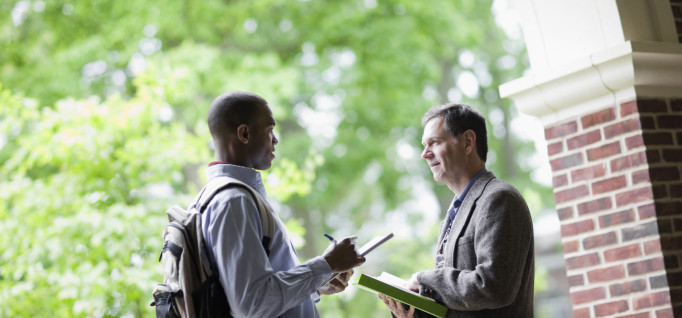A People-Centric Model for Student Success
By Robert L. Pura
May 11, 2015
Greenfield Community College’s efforts to build relationships and community put students on the right path.
As a community college president, I often meet with alumni to ask them about their experience at our institution and what mattered most to their success. Without exception, they never talk about a lecture, formula, theory or skill that they learned in class. Instead, they talk about that one faculty or staff member who made the difference in their lives. Whether a professor, an admissions officer, an adviser or the kind cashier in the cafeteria, it always comes back to that one person who inspired them, mentored them and made them feel ready to take the journey to a better life.
The words of these students over the years have clarified and strengthened our shared vision of what we at Greenfield Community College (GCC) should prioritize to help our students achieve success. It is about cultivating and providing resources to our faculty and staff, who are the ones who see the potential in our students — often even before the students do — and then work hand in hand with them to achieve their goals.
In the article How to Save American Colleges, Purdue University President and former Indiana governor Mitch Daniels says that what matters is not where you go but “how you go.” According to the results of the Gallup-Purdue Index, a national survey of 30,000 college graduates that attempted to quantify not only what graduates earn but also how well they are navigating adult life, “the three most important contributions that college makes to a sense of workplace thriving after graduation are: having one professor who made you excited about learning, feeling as though teachers cared about you, and working with a mentor. Graduates who checked those boxes were more than twice as likely to sense they are flourishing at work.”
Case in point: Of course, financial aid matters; curriculum sequencing and scheduling matter; attending full time versus part time matters. But I know, from our own GCC data as well as that of national surveys such as CCSSE, that when a student connects with faculty and staff and feels that they truly belong, that matters most. The results of our investment in student relationships with staff and faculty are clear: 45 percent of GCC graduates over the past five years have transferred, and 70 percent of those who graduated in one of our workforce programs are employed or continuing their education within a year of graduation.
The most effective student success efforts are based on relationship and community building. When faculty, advisers and staff get to know each and every student early on, they are best able to guide them to reach their educational and career goals. It is a people-centric model. The goal is to make every student feel that they are welcome, that they can succeed and that they do belong in college. Community colleges nationwide can create success, one student at a time, by teaching students how to navigate their journey — not by throwing them into the deep end of a pool filled with ambiguous course pathways and confusing transfer systems, but by walking side by side with them until they can chart their own course.
We know our model for student success is made possible by the small size of our college — it is not easily sized up, is hard to standardize and does not come without great expense. It demands leadership and commitment at every level of the college, each of us rowing in the same direction — toward students and their success. We believe that every college can make these relationships and this model for student success a priority.






